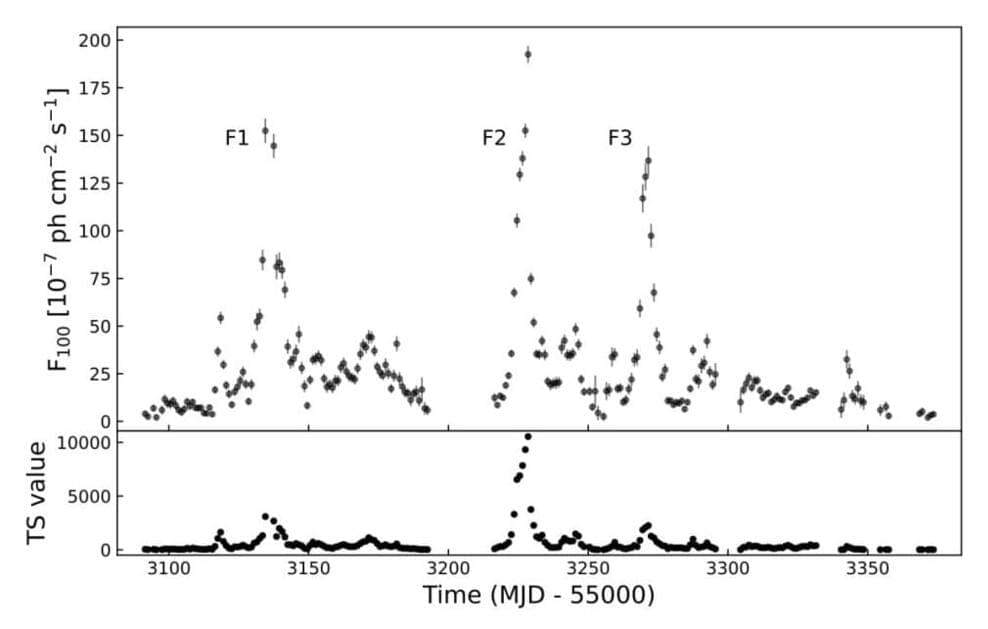Using NASA’s Fermi spacecraft, Chinese astronomers have investigated the variability and spectral behavior of gamma-ray flares in a distant blazar known as 3C 279. Results of the study, presented in a paper published in the Publications of the Astronomical Society of the Pacific, could help researchers better understand the flaring activity of blazars.
Blazars are very compact quasars associated with supermassive black holes at the centers of active, giant elliptical galaxies. Based on their optical emission properties, astronomers divide blazars into two classes: flat-spectrum radio quasars (FSRQs) that feature prominent and broad optical emission lines, and BL Lacertae objects (BL Lacs), which do not.
At a distance of about 5 billion light years, 3C 279 is an FSRQ with an estimated black hole mass of 300–800 million solar masses. It is a bright and powerful gamma-ray source in the high–energy sky and is known as the first blazar showing strong and rapid variability at GeV energies.










Comments are closed.